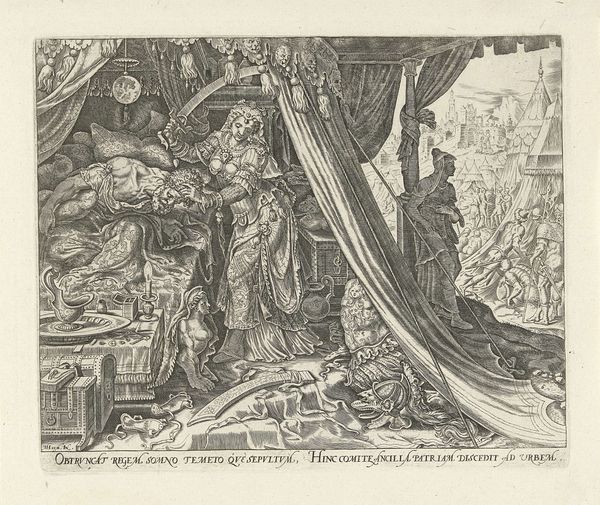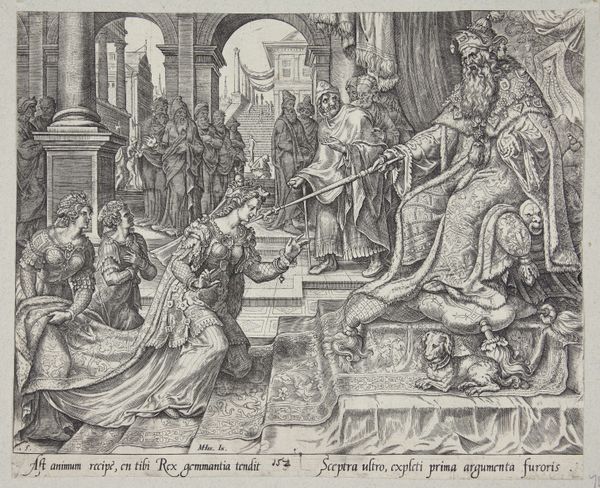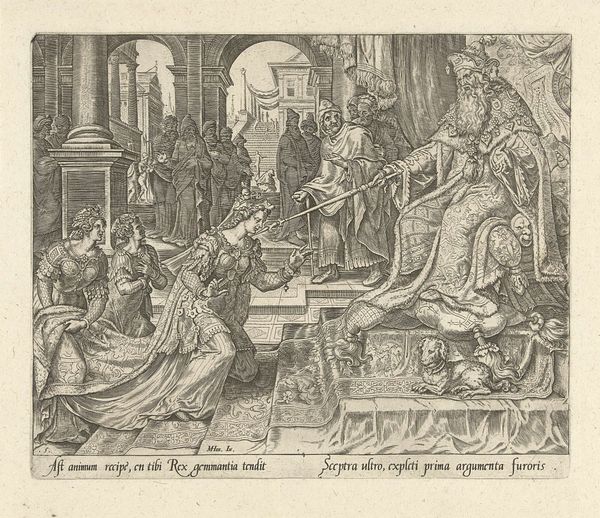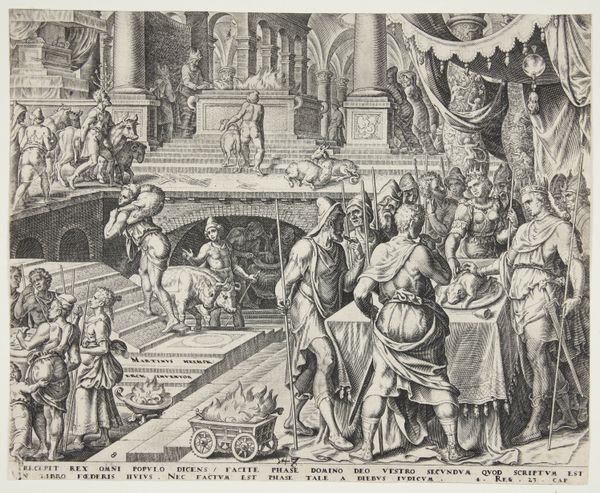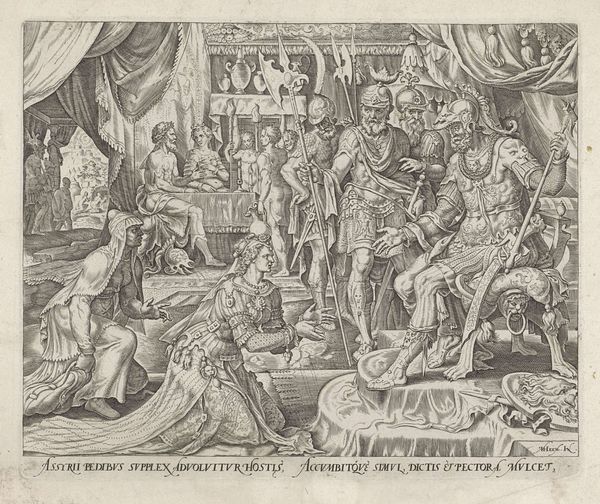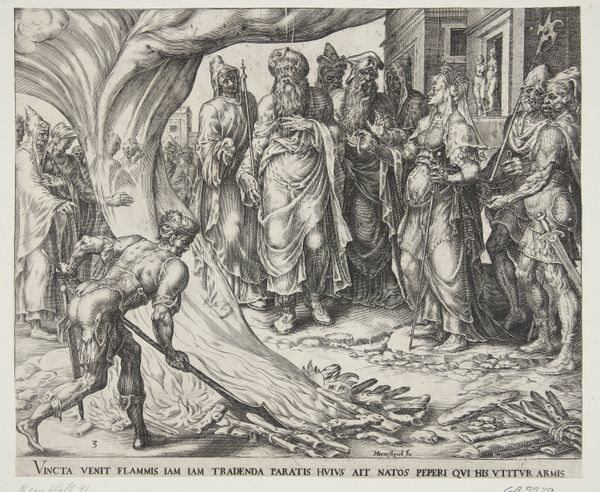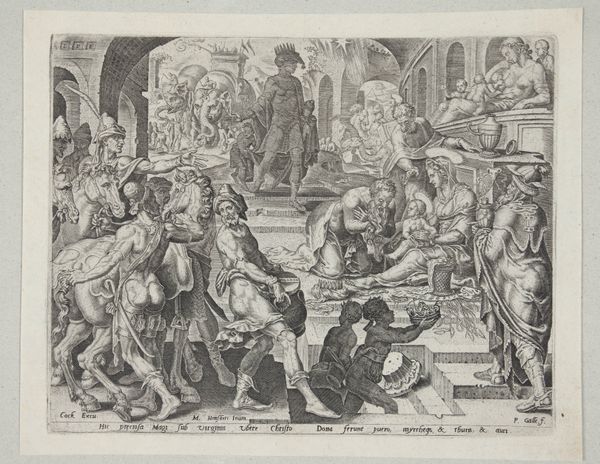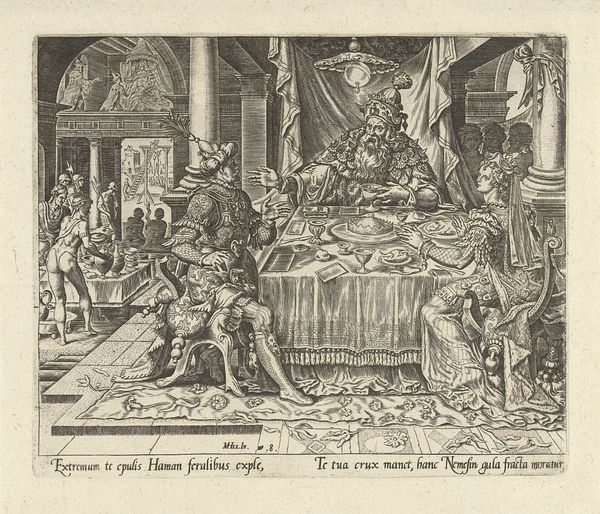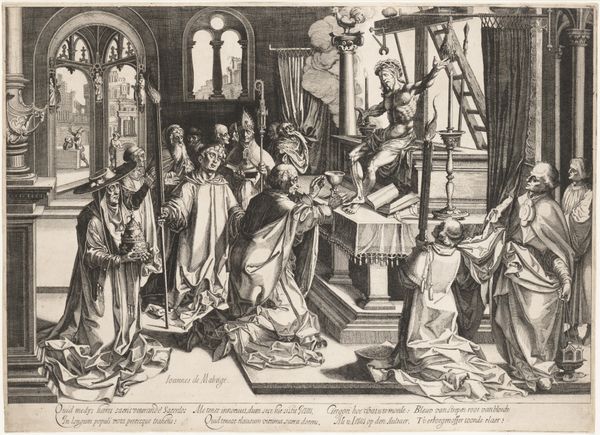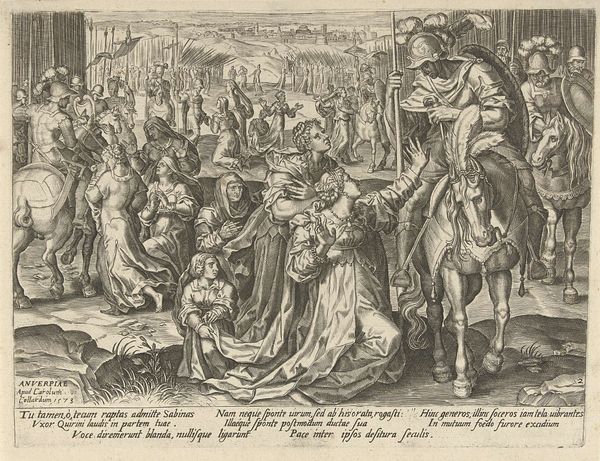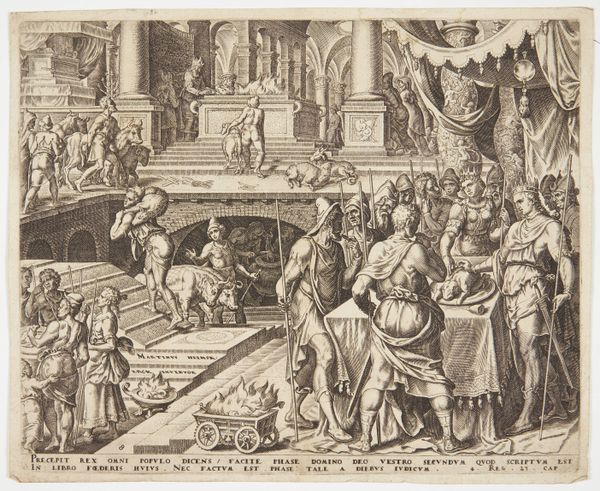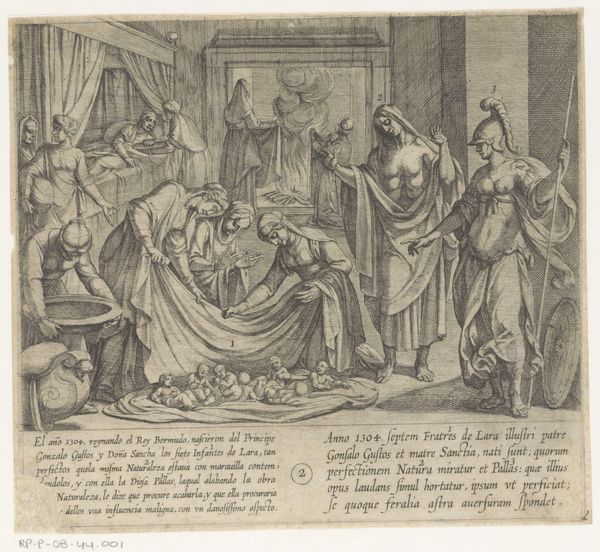
Dimensions: 215 mm (height) x 260 mm (width) (monteringsmaal), 202 mm (height) x 247 mm (width) (plademaal)
Curator: This engraving from 1564 by Philips Galle is titled "Judith Slaying Holofernes," a scene drawn from the Book of Judith. It’s currently held at the SMK, Statens Museum for Kunst. Editor: It's incredibly detailed! The sheer amount of hatching creates this really dark, almost oppressive mood despite the relatively small scale. The diagonal line created by the tent pole does cut the composition in half, leading the eye away into the distance of that fortified city. Curator: Indeed. The print media during this time allowed the widespread dissemination of biblical stories but also perpetuated certain social messages. The story of Judith resonated with a public grappling with religious conflict. The engraving emphasizes Judith as an active agent in defying tyranny. Editor: Looking at the formal arrangement, the way she stands almost rigidly upright contrasts so sharply with Holofernes sprawled and lifeless on the bed. The textures are just stunning, really. Note how the draped fabric creates a counterpoint to the sheen of his armor and Judith's decorative robe. Curator: That contrast underscores the symbolic meaning. Holofernes is defeated through cunning and divine favor, not military strength. Galle uses Judith's success as an example of religious fortitude and feminine power. It mirrored anxieties concerning foreign rule. Prints such as this often acted as propaganda pieces meant to fortify collective identity. Editor: See how the city in the background and the chaotic cluster of soldiers near the city walls juxtapose with the almost staged foreground setting. The linear intensity diminishes as it extends into the horizon—blurring reality and imagination within one singular piece. The level of skill and artistry exhibited really makes a powerful impact here. Curator: It’s a testament to Galle’s understanding of the cultural context in which he was operating and an important record of how imagery was utilized during this turbulent historical period. Editor: It does exemplify the complex way in which art can embody the mood of both strength and fragility by manipulating lines and figures.
Comments
No comments
Be the first to comment and join the conversation on the ultimate creative platform.
